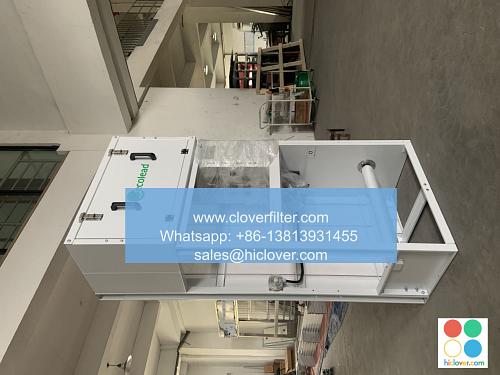The Role of Air Filters in Reducing Particulates and Pollutants

The role of air filters in reducing particulates and pollutants is crucial for maintaining good indoor air quality (IAQ) and mitigating the risks associated with air pollution. Air filtration systems are designed to remove airborne contaminants, including particulate matter (PM), nitrogen dioxide (NO2), ozone (O3), and volatile organic compounds (VOCs), thereby contributing to a healthier environment. In this article, we will explore the significance of air filters in reducing particulates and pollutants, highlighting various application areas, including residential, commercial, and industrial settings.
Types of Air Filters and Their Applications
There are several types of air filters available, each with its own set of characteristics and application areas. Some of the most common types of air filters include:
– **HEPA (High Efficiency Particulate Air) filters**: These filters are capable of capturing 99.97% of particles as small as 0.3 microns, making them ideal for use in hospitals, laboratories, and other areas where high levels of air purity are required.
– **Activated Carbon filters**: These filters are designed to capture gases and odors, making them useful in applications where VOCs and other gaseous pollutants are a concern.
– **Electrostatic filters**: These filters use an electrostatic charge to attract and capture particles, making them a popular choice for residential and commercial applications.
Reducing Particulates and Pollutants with Air Filters
Air filters play a critical role in reducing particulates and pollutants in the air, which can have significant health benefits. Some of the key ways in which air filters can improve IAQ include:
– **Removing particulate matter (PM)**: PM is a major contributor to air pollution, and can cause a range of health problems, including respiratory issues and cardiovascular disease. Air filters can capture PM, reducing the risks associated with exposure.
– **Capturing nitrogen dioxide (NO2)**: NO2 is a toxic gas that can cause respiratory problems and other health issues. Air filters can capture NO2, reducing the risks associated with exposure.
– **Reducing ozone (O3) levels**: O3 is a powerful oxidant that can cause respiratory problems and other health issues. Air filters can capture O3, reducing the risks associated with exposure.
Application Areas for Air Filtration Systems
Air filtration systems have a wide range of applications, including:
– **Residential buildings**: Air filtration systems can improve IAQ in homes, reducing the risks associated with exposure to particulates and pollutants.
– **Commercial buildings**: Air filtration systems can improve IAQ in offices, shopping centers, and other commercial buildings, reducing the risks associated with exposure to particulates and pollutants.
– **Industrial settings**: Air filtration systems can improve IAQ in industrial settings, such as factories and manufacturing facilities, reducing the risks associated with exposure to particulates and pollutants.
– **Healthcare facilities**: Air filtration systems are critical in healthcare facilities, such as hospitals and clinics, where high levels of air purity are required to prevent the spread of infections and maintain a healthy environment.
Conclusion and Future Directions
In conclusion, the role of air filters in reducing particulates and pollutants is critical for maintaining good IAQ and mitigating the risks associated with air pollution. With a wide range of applications, including residential, commercial, and industrial settings, air filtration systems are an essential component of any building’s HVAC system. As the need for clean air continues to grow, it is likely that air filtration technology will continue to evolve, with new and innovative solutions emerging to address the challenges of air pollution. By highlighting the importance of air filtration and its various application areas, we can work towards creating a healthier and more sustainable environment for everyone. It looks like you’re ready to start a conversation or ask a question, but you haven’t provided a specific prompt yet. What’s on your mind? Would you like to discuss a particular topic, ask for advice, or explore an idea? I’m here to help and provide information on a wide range of subjects. Please go ahead and share your thoughts!

